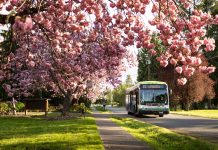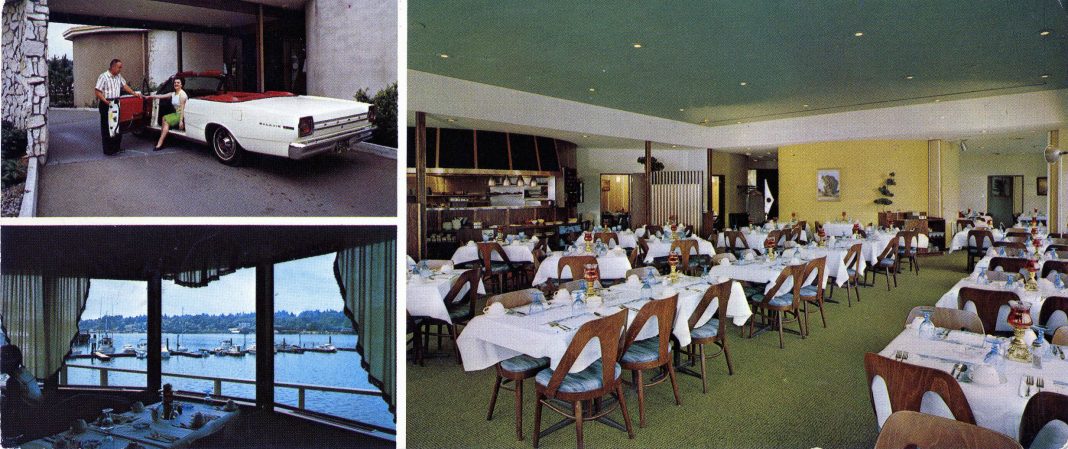At Easter 1972 crowds at the Jacaranda could enjoy a brunch buffet of smoked pork chops and applesauce, fresh homemade pastry, fresh fruit, salads, puddings and juice all for $2.50 ($1.75 for children). Workers decorated the buffet table with holiday-themed ice sculptures, including a giant bunny rabbit. Those who opted for dinner could choose from roast meats and seafood.
 Located at 1535 North Washington Street next to the KGY radio station on land leased from the Port of Olympia, the Jacaranda—also known as Stefan’s, Ebb Tide Inn and Genoa’s over the years—was a local landmark from its opening in the 1960s until it closed in 2002.
Located at 1535 North Washington Street next to the KGY radio station on land leased from the Port of Olympia, the Jacaranda—also known as Stefan’s, Ebb Tide Inn and Genoa’s over the years—was a local landmark from its opening in the 1960s until it closed in 2002.
The Jacaranda building got its start as a space-age display at the Century 21 Exposition in Seattle. This World’s Fair was all about the future. The Douglas Fir Plywood Association sponsored a “Plywood Home of the Living Light” designed to show the possibilities of plywood construction.
After the Exposition was over, most buildings were taken down. However, a group of Olympia businessmen formed Jacaranda, Inc., under president Charles Ford, and had the “Plywood Home” barged down to Olympia. They turned half of the “Home” into a restaurant at the Port of Olympia. (The other part was made into the Capitol City Golf Club’s clubhouse which was later demolished.)
The Jacaranda, named for the tropical Latin American flower and a restaurant in Mexico, opened on Monday April 4, 1964. It billed itself as “Olympia’s Fabulous Waterfront Restaurant” and promised “waterfront dining at its best.”
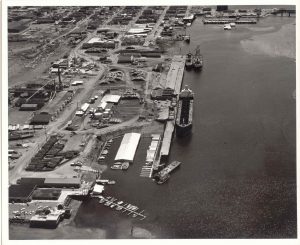
The Daily Olympian offered a glowing description of the restaurant the Friday before opening. A Jacaranda tree greeted guests at the door. “The House of the Living Light forms the front half of the restaurant,” the paper explained. “…Three of the [high half-] dome type rooms” of the original house “are part of the Jacaranda. One room houses the coffee shop. A second is a private dining room. And the last has become a ladies powder room…” The main dining room was added to the back of the building and featured an avocado-colored carpet and a panoramic view of the waterfront and Olympic mountains. “From every seat in the main room,” the article promised, “there is a clear look at Budd Inlet.” The restaurant was decorated in soft greens, browns and blues. An outside walkway around the main dining room allowed visitors to enjoy the fresh sea air.
The restaurant attracted notice for offering fine dining at moderate prices. AAA even gave it its seal of approval. A menu preserved in the University of the Washington Special collections stated that all meat was cooked with vegetable shortening and that free mooring was available to customers who arrived by boat. The restaurant was perhaps most famous, however, for its Sunday morning breakfast buffet. It cost $2.50 per adult and $1.50 per child.
The restaurant was also noted for its live music and entertainment. Groups included The Trends, Lucas & Torrence, Patti Summers and the Sound Co., Stormy Weather, Johnny Lewis Trio, The Swinging Two, The Knockouts and Ken Olendorf. They typically played for a week at a time.
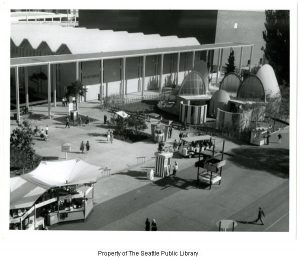
Still, the Jacaranda had its share of troubles. Soon after opening the restaurant went into receivership. It reopened in 1966 under new management. The new managers added a new lounge, featuring a bar and dancing area. The restaurant was bought by Stefan Holmquist, who renamed it Stefan’s On Budd Inlet in September 1977. Stefan’s was short lived, however. The restaurant closed after the Department of Ecology discovered it was leaking raw sewage into Puget Sound. The restaurant disputed the charges.
In 1980 Mark Silversten bought the restaurant and renamed it the Ebb Tide Inn on Budd Inlet. They added a mesquite charcoal broiler in 1984 to cook steaks and seafood. The restaurant changed its name again in 1991 to become Genoa’s on the Bay. People ringing in the new year in 2000 at a Millennium Party probably could not imagine as they nibbled on special foods and danced to live entertainment that the restaurant was in its final years.
Early in the morning on November 7, 2002 a torch used to brown desserts caused a kitchen fire. Although damage at first seemed limited and the owners promised to reopen soon, they did not and the building was demolished. In 2007 it was replaced by a new restaurant, Anthony’s Hearthfire Grill, continuing the site’s association with fine cuisine.
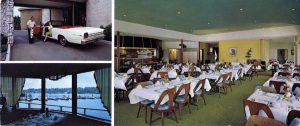
From the beginning, the restaurant served as a community center. It hosted wedding receptions in their private banquet rooms and countless people celebrated birthdays, anniversaries, and other special occasions there. The restaurant was also a popular meeting place for clubs and other organizations. For example, the Olympia Chamber of Commerce held breakfast meetings there for many years. In fact, 75 of them had gathered the morning of April 29, 1965 at the Jacaranda when the region was struck by a major earthquake.
The restaurant also tried to support local community groups, boosting Capital Lakefair, the Pet Parade—they offered $5.00 for the best dressed captain costume in 1968—and hosting fundraisers for organizations like the Muscular Dystrophy Association and Easter Seals. The restaurant also hosted style shows and art exhibitions. Local artists displayed their works there.
No matter its name—Jacaranda, Stefan’s, Ebb Tide Inn or Genoa’s—the restaurant at the Port of Olympia was a local favorite and left a long legacy of fine dining that is continued by Anthony’s Hearthfire Grill.










